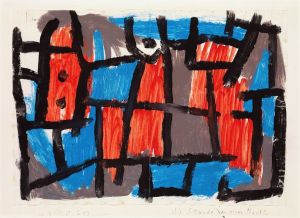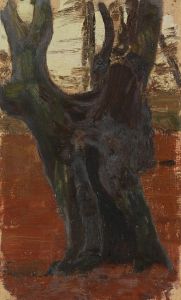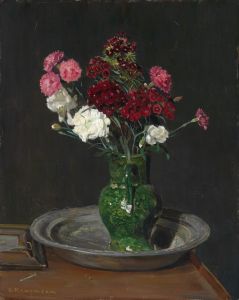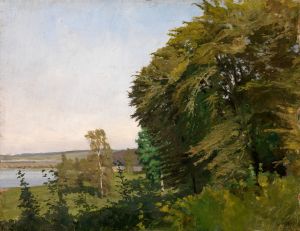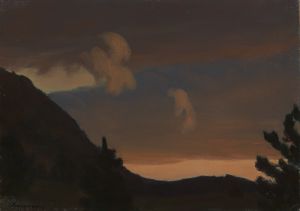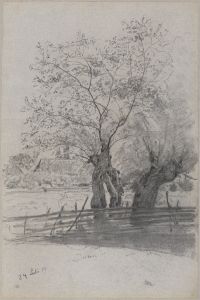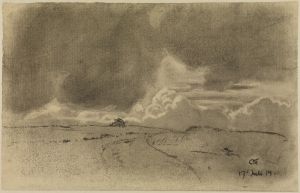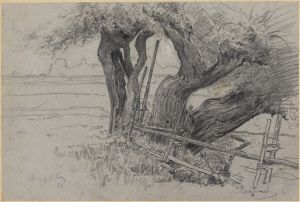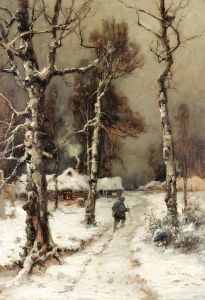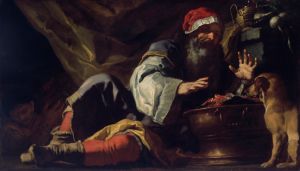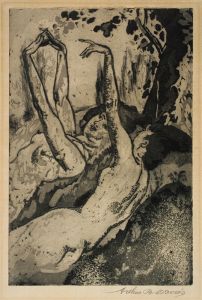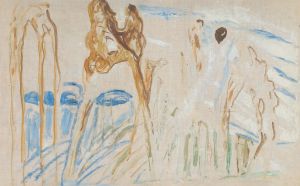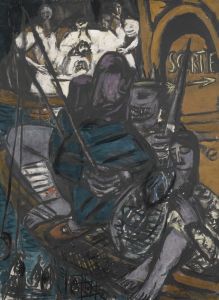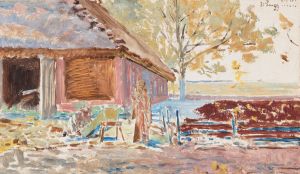
Nach Sonnenuntergang im Winter
A hand-painted replica of Gustav Kampmann’s masterpiece Nach Sonnenuntergang im Winter, meticulously crafted by professional artists to capture the true essence of the original. Each piece is created with museum-quality canvas and rare mineral pigments, carefully painted by experienced artists with delicate brushstrokes and rich, layered colors to perfectly recreate the texture of the original artwork. Unlike machine-printed reproductions, this hand-painted version brings the painting to life, infused with the artist’s emotions and skill in every stroke. Whether for personal collection or home decoration, it instantly elevates the artistic atmosphere of any space.
Gustav Kampmann was a German painter and graphic artist associated with the late 19th and early 20th centuries. He is known for his contributions to the art movements of Impressionism and Symbolism. Kampmann's work often features landscapes and scenes that capture the atmospheric qualities of light and color, reflecting his interest in the natural world and its transient beauty.
"Nach Sonnenuntergang im Winter" (translated as "After Sunset in Winter") is one of Kampmann's notable works. This painting exemplifies his ability to convey the serene and contemplative mood of a winter landscape after the sun has set. The artwork is characterized by its use of muted colors and soft brushstrokes, which create a sense of tranquility and stillness. The composition likely depicts a snow-covered landscape, possibly featuring elements such as trees, fields, or a distant horizon, all enveloped in the dim light of twilight.
Kampmann's technique in this painting reflects his Impressionist influences, particularly in his treatment of light and atmosphere. The subtle gradations of color and the delicate interplay of light and shadow are hallmarks of his style. By capturing the fleeting moments of dusk, Kampmann invites viewers to experience the quiet beauty of nature during the winter months.
The painting's title, "Nach Sonnenuntergang im Winter," suggests a specific time of day and season, which are central to the work's thematic focus. The winter setting may evoke feelings of introspection and solitude, common themes in Kampmann's oeuvre. His ability to evoke emotion through landscape painting aligns with the Symbolist movement's emphasis on conveying deeper meanings and emotions through art.
While specific details about the painting's creation, such as its exact date or current location, are not readily available, it is representative of Kampmann's broader body of work. His paintings often explore the interplay between light and landscape, capturing the ephemeral qualities of nature with sensitivity and nuance.
Gustav Kampmann's contributions to art extend beyond his paintings. He was also involved in graphic arts and was a member of the Darmstadt Artists' Colony, a group of artists and designers who were part of the Jugendstil movement, the German counterpart to Art Nouveau. His involvement with this group highlights his engagement with contemporary artistic trends and his commitment to exploring new forms of artistic expression.
In summary, "Nach Sonnenuntergang im Winter" by Gustav Kampmann is a testament to the artist's skill in capturing the subtle beauty of winter landscapes. Through his Impressionist technique and Symbolist sensibility, Kampmann creates a work that resonates with viewers, inviting them to reflect on the quiet moments of nature and the emotions they evoke.





